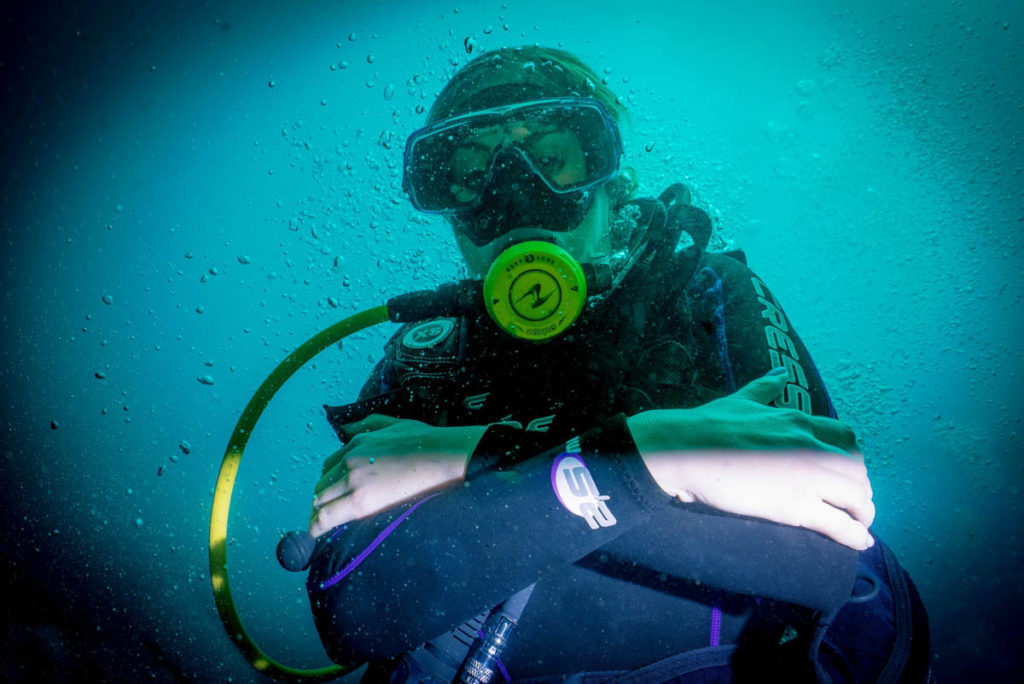In this blog we are going to look at ways for a Scuba Diving Instructor to stand out from the crowd in this very competitive job market.
Are you a brand new Scuba Instructor who just passed the IDC or maybe you already have some experience but you are looking for the next job or to move up the employment ladder.
Everyone knows, the more skills you bring to a dive centre, the more employable you are.
Typically these skills can be; multi-lingual, social media expert, boat captain, compressor engineer, etc. These skills are without a doubt beneficial to most dive centres but what about you who have none of these? Nobody ever talks about making sure your dive courses stand out; head and shoulders above everyone else’s… You have spent money and committed a lot of time to becoming a Scuba Instructor, why not be the very best you can? In this series of blogs I´m going to help you conduct your courses in a way that sets you apart from the others.
But first a brief introduction to who I am and what I have been doing in the world of scuba diving. My name is Marc Green and I am the owner of Green Divers Tulum, Mexico. I`ve been teaching scuba diving for over twenty years; first 5 years around Indonesia, The Philippines and Thailand, then Central America with the odd temporary seasonal contract in Iceland, Malta, and Cuba. But now I’m based in Tulum, Mexico, teaching and guiding in the cenotes – courses ranging from Cave Diver, Sidemount, Decompression Technical Diving and all recreational courses including DSD experiences.
The skill we are going to look at in more detail today is from the Open Water Course; Equipment Set Up. I´m not going to list every single step, just the ones I’ve noticed, nobody ever does but should… I’ll explain how and why they can be so valuable.
Tip #1 – Precaution when opening the tank
Once the first stage has been attached to the tank, LPI connected, both second stages secured off of the floor, it’s almost time to open the valve. But first we want to pay attention to the SPG. Where should it be located while turning the valve on? Most people practice having the glass facing outwards or downwards to avoid the potential of the glass flying or shattering and fragments flying out towards anyone, once it comes under pressure. Good idea, so what do they do? Turn the SPG over so the glass is facing down but the burst disk on the back of a lot of SPGs is now facing directly towards your eyes! This burst disk is designed to burst before the glass face shatters. In the photo below you can see the burst disk on the back of the SPG – Imagine the damage that could do to your eye.
The simple solution is to place the SPG into the BCD pocket while turning the air on.
It’s quite rare for anything like this to happen, but I’ve seen it happen at least 3 times over the years.
Tip #2 – Tank valve completely open, NO QUARTER TURN-BACK.
One thing certified divers always seem to remember, no matter what else they forget, is that they were taught to open the tank then do a quarter turn-back on the valve. When asked why they do that, their only answer ever is “because my instructor told me to” with no idea as to why.
This “now well out of date” practice started many years ago when tank valves could be quite difficult to open and close. Due to better engineering and metal availability this is no longer the case. Modern valves can easily be opened and closed with just two fingers. So why this continues to be taught is a bit of a mystery. We are going to look at why this could potentially be dangerous and hopefully spread this information to instructors and divers:
Let’s imagine this situation; you are on a dive boat, you have set up your gear with a quarter turn-back on the valve as you were taught. All regs checked, you go to rinse off your mask. In the meantime the deckhand is “helping out” by going around checking that all the tanks are open. The boat is full and he has a lot of tanks to check so he is using both his right hand and left hand to check tanks all facing different directions. He also has the idea of a quarter turn-back. When he checks your tank he is using his left hand and because of the quarter turn-back gets confused… He thinks your tank is closed so “opens” it and does his quarter turn-back. Your tank is now almost closed. You now come back to your equipment, put it on, do your buddy check including breathing from the regulator while looking at the gauge. Gauge doesn’t move and air comes as you breathe. You and your buddy are ready and in you roll. Descending down, all is good until you get to about 8 metres then all of a sudden….Out of Air!! But why? It was working fine on the boat and as you descended down but now no air! A slightly open tank will give you air on the surface and at shallow depths but as your depth increases a partially open tank will not give you air. The dangers of this are obvious.
Without the quarter turn-back, had the tank been left fully open by you, the deck hand would have closed it completely and you would have noticed during your buddy check. Vice versa the deck hand would simply have opened your tank for you. Always look at your SPG when you do your buddy check – If your tank is open the needle won’t move on the SPG. If your tank is closed, the needle will go down with each test breath signifying the tank is closed. Always have your tanks either fully open or fully closed and de pressurized to avoid this potential major problem.
Tip #3 – Is your SPG working properly?
This tip I learnt the hard way as it actually happened to me for real back in 2001 while diving the wreck of the King Cruiser in Thailand and with only about 20 dives in my log book. This was my first deep dive after my Advanced Open Water Course, all was going well. We had been down to around 30 metres, spent time on the wreck according to our tables, had started our ascent, and reached our safety stop depth at 5 meters. I checked my SPG; 50 Bar and just 1 minute left of the safety stop, perfectly executed, or so I thought. At this moment I took a breath, didn’t seem to get much air, looked at my SPG again, it still said 50 Bar, took another breath, and this time I didn’t get any air at all. Remembering my training from a few weeks before I signalled to the guide: “I’m out of air”. I looked for his alternative regulator, which I couldn’t find. His reaction to my signal was to tap my SPG that said 50 Bar and give me the OK signal. Not wanting to waste anymore time I decided to do the CESA just how I had practiced on my course; swimming to the surface while exhaling. I reached the surface, no problem, and orally inflated my BCD as the inflator wasn´t working either!
On the boat the inquest into what happened started. First thing established was the guide didn’t actually have an alternative regulator, so that was him fired. Next thing was that the SPG wasn´t reading correctly. The tank was empty. The SPG was old and worn out and maybe water had gotten into the first stage, running down the inside of the high pressure hose leading to the workings of the SPG to rust and corrode causing the needle to stick at the 50 Bar mark and causing this potentially very dangerous situation.
With this first hand experience I have incorporated a procedure into my courses to prevent this from happening to students in the future. When you have prepared your equipment, checked all the regs, inflator and deflators – all working fine – close your tank and then while looking at the gauge, purge one of the second stages. The needle should drop smoothly without any jerking or getting stuck like mine did in the above scenario. SPGs that stick, cannot be fixed and you shouldn’t have to tap it for it to move. These SPGs belong in the bin.
Tip #4 – Is your BCD self-inflating?
Last tip for today. Once everything has been checked, leave the tank valve fully open with the BCD completely empty while you do your last few minutes preparation. During this time we are ensuring that the BCD isn´t self-inflating. Though, more of an inconvenience, as divers should be able to disconnect the LPI and orally inflate the BCD, it would be a good idea to swap this BCD for another before the dive.
For divers with their own equipment this is usually a very simple fix if you have the right tool and a spare inflator button. Simply switch out the button.
I hope these tips may help you either when teaching your own Open Water Courses or just add to your own dive preparation routine.
Look out for the next blog where I will cover tips for another recreational dive course.







